Comet Hyakutake on 3/22/96.
Click on image for full size
Night of the Comet/NASA
Comet Hyakutake
Comet Hyakutake was found on January 30, 1996 by a man in Japan named Yuji Hyakutake. He spotted it using strong binoculars. This comet was visible from late March until late April, 1996. On March 25, the comet reached its closest approach to Earth of 9.3 million miles away.
Comet Hyakutake has probably not approached Earth for thousands of years. Astronomers observing comet Hyakutake found large quantities of the
molecules ethane (C2H6)
and methane (CH4), so far not found in other comets. Astronomers for the first time also observed X-rays being emitted from a comet.
Finding these usual molecules in a comet suggests that comet Hyakutake may be a new type of comet.
You might also be interested in:

A bit of background Space scientists have found x-rays when looking at comets. These x-rays are just like the x-rays your doctor uses when looking for a broken bone. They are also like the x-rays your
...more
A bit of background Space scientists have found x-rays when looking at comets. These x-rays are just like the x-rays your doctor uses when looking for a broken bone. They are also like the x-rays your
...more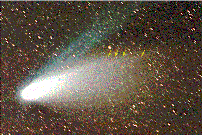
Comet Hale-Bopp was one of the brightest comets of all time. Astronomers witnessed the comet spew out intermittent bursts of dust. The surface seemed to be an incredibly dynamic place, with 'vents' being
...more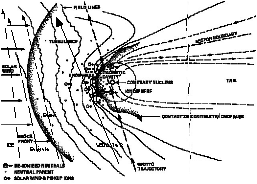
Six spacecraft flew to Halley's comet in 1986. There were two spacecraft launched from Japan, named Suisei and Sakigake, and two from the Soviet Union, named Vega 1 & 2. One spacecraft, ICE, was from the
...more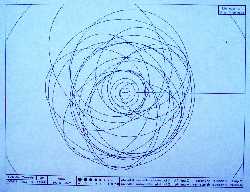
Astronomers have noticed a group of comets which they call the Jupiter Family of Comets. This family of comets is to be found circling between Jupiter and the sun, as shown in this picture. The comets
...more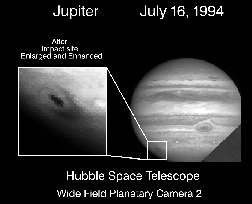
Scientists have learned a great deal from the crash of comet Shoemaker-Levy 9. Scientists traced the orbit of the comet backwards in time to guess its origin. The crash of a comet like Shoemaker-Levy 9
...more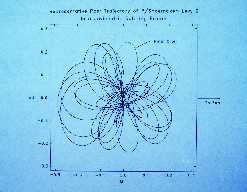
Mathematical theory suggests that comet Shoemaker-Levy 9 was likely a short-period comet which was captured into orbit around Jupiter in 1929. This orbit ended with a collision of the comet with Jupiter
...more














